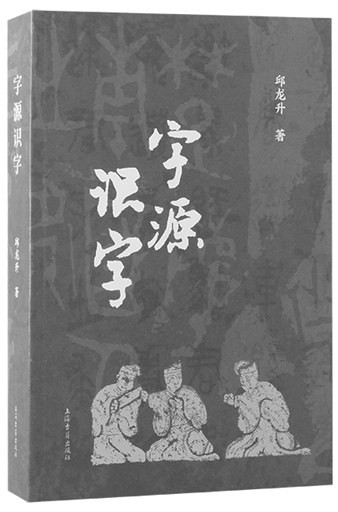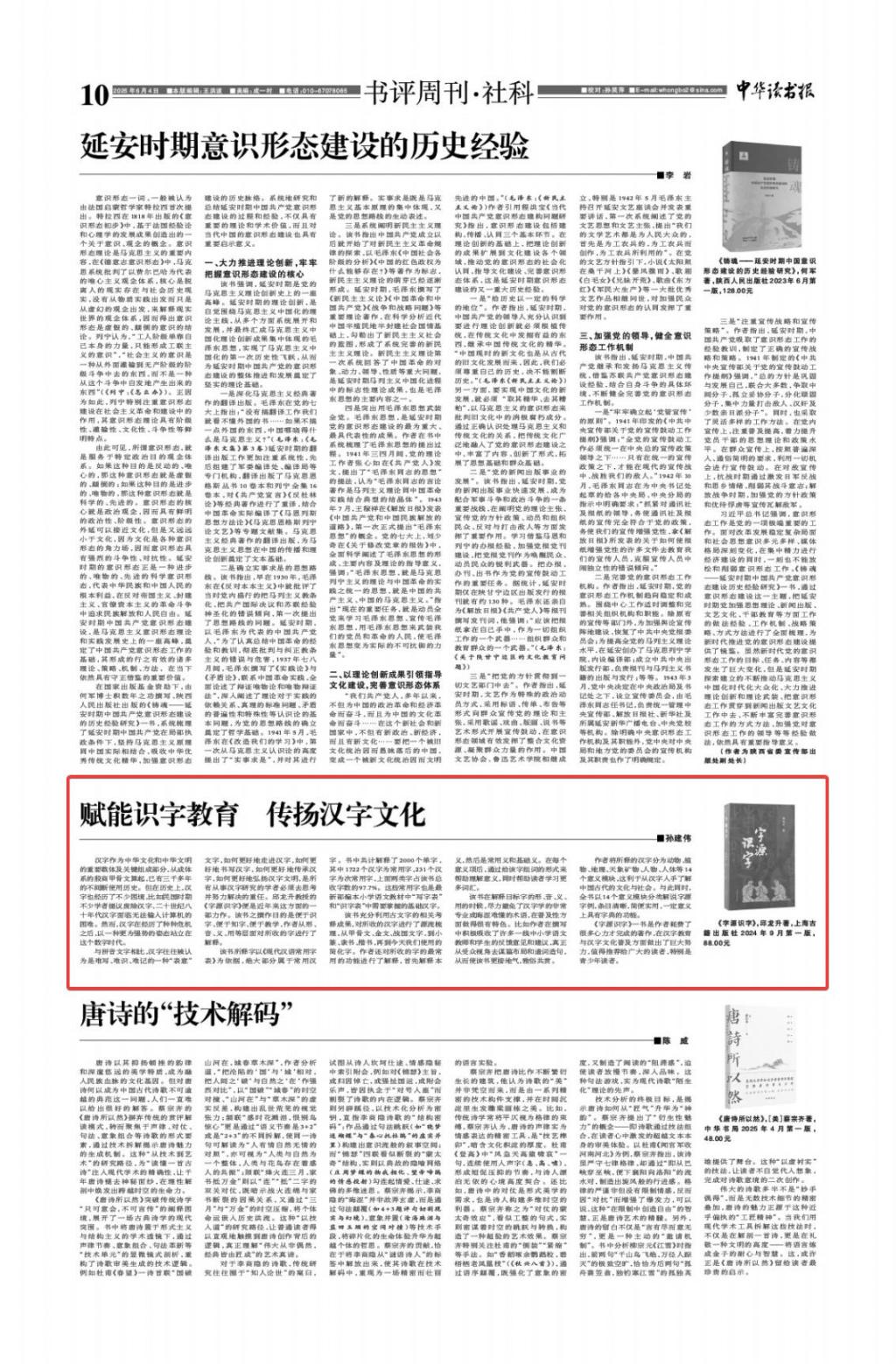China Reading Weekly published on June 4th a review article titled “Empowering Literacy Education, Promoting Chinese Character Culture” by Associate Professor Sun Jianwei, Vice Dean of the School of International Chinese Studies & Chinese Culture at Shaanxi Normal University. The article highly praises Chinese Character Origin Literacy, a book authored by Professor Qiu Longsheng from the School of Humanities at Taizhou University, describing it as “a work completed through immense effort by the author, who has made significant contributions to Chinese character education and cultural popularization. It is highly recommended for a broad readership, especially young readers.”
The full text of the review is as follows:

Chinese Character Origin Literacy, by Qiu Longsheng, First Edition, Shanghai Ancient Books Publishing House, September 2024
As a crucial carrier and key component of Chinese culture and civilization, Chinese characters boast a history of over three thousand years of continuous use, dating back to the systematic Oracle Bone Script of the Shang Dynasty in Chinese history. However, throughout history, Chinese characters have faced numerous challenges, such as proposals from scholars during the Republican era to abolish them and difficulties in computer input during the 1980s. Despite these crises, Chinese characters have persevered and now stand strong in the digital age.
Compared to alphabetic writing systems, Chinese characters are often perceived as difficult to write, recognize, and remember due to their ideographic nature. How to better understand, write, pass down, and promote the civilization of Chinese characters is a significant task that scholars in the field must contemplate and strive to address. Professor Qiu Longsheng’s Chinese Character Origin Literacy is a notable work in this area in recent years. The book aims to facilitate character recognition, understanding, and teaching by explaining the included characters from aspects of form, pronunciation, meaning, and usage.
The characters explained in the book are based on the “Modern Chinese Frequently Used Character List,” with the vast majority being commonly used characters. It explains a total of 2000 single characters, comprising 1722 frequently used characters and 231 less frequently used characters. These two categories account for 97.7% of the total characters included. These frequently used characters also form the foundation of the “writing table” and “character recognition table” in the latest ministry-edited primary school Chinese language textbooks.
The book fully utilizes relevant research findings on ancient scripts to trace the evolution of the included characters, from Oracle Bone Script, Bronze Script, and Warring States script to Small Seal Script, Clerical Script, Regular Script, and finally to the simplified characters used today. The author also explains the most common functions of each character, starting with the original meaning, followed by common and basic meanings. After each meaning entry, word examples using the character are provided to aid understanding and help readers learn more vocabulary.
When explaining the form, pronunciation, meaning, and usage of the characters, the book makes a special effort to avoid highly specialized or obscure terminology from Chinese character studies, making it distinctive in its accessibility. For instance, the author actively incorporated feedback and suggestions from frontline primary and secondary school Chinese language teachers and students during writing, truly considering the audience’s perspective in structuring the content and choosing wording. This makes the book more relatable and appealing to both specialists and general readers.
The author categorizes the explained characters into 14 semantic modules, such as animals, plants, geography, celestial phenomena & minerals, people, and the human body. This facilitates understanding ancient Chinese culture and society through the lens of Chinese characters. Furthermore, the book’s classification and explanation of character origins and examples into these 14 modules make it clear, user-friendly, and practical, functioning somewhat like a dictionary.
Chinese Character Origin Literacy is a work completed through immense effort by the author, who has made significant contributions to Chinese character education and cultural popularization. It is highly recommended for a broad readership, especially young readers.

China Reading Weekly publishes a review of Professor Qiu Longsheng’s book Chinese Character Origin Literacy